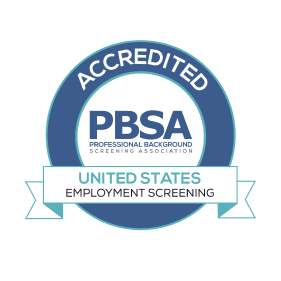Rethinking Resumes: Effective Recruiting Strategies for HR Leaders
Hiring managers, recruitment teams, and HR leaders know that effective recruitment strategies today aren’t just about filling positions but about building meaningful connections between candidates and organizations.
Adam Gellert, founder and CEO of Hired Hippo, has spent his career rethinking how we approach recruitment, bringing fresh solutions to long-standing challenges. From transforming job descriptions and resumes to addressing the unique needs of startups, Adam’s insights offer a roadmap for enhancing the hiring process and ensuring candidates find roles where they can thrive.
Understanding the Expectations of Employers and Job Seekers
The hiring process often reveals the tension between what job seekers and employers want.
“Candidates want simplicity and clarity—roles where they can grow and succeed immediately,” Adam shares. “Meanwhile, employers focus on finding the right person by testing assumptions and ensuring alignment.”
For HR leaders and recruitment teams, this means rethinking how opportunities are presented and evaluated.
“You can’t approach hiring as a one-size-fits-all process anymore,” Adam emphasizes. “You have to meet candidates where they are while ensuring your organizational goals are met.”
Transforming Job Descriptions and Resumes
Traditional job descriptions and resumes have long been tools of the trade, but they’re often outdated and ineffective. Adam points out that many job descriptions act more like advertisements, offering an incomplete or misleading picture of the role.
“Too often, candidates leave jobs within the first year because the position wasn’t what they expected,” he notes.
By creating transparent, engaging job descriptions highlighting culture, expectations, and team dynamics, employers can attract candidates who align with their needs.
Resumes face similar criticism. “They don’t tell the whole story,” Adam explains. “Employers spend just seconds reviewing them, yet they’re meant to represent years of someone’s professional journey.”
To address this, consider moving beyond paper resumes and offering conversational profiles that allow candidates to showcase their skills, values, and aspirations more dynamically. This richer data enables HR teams to identify candidates who fit the role and bring value to the organization.
Mitigating Hiring Risks for Startups and Entrepreneurs
For startups and smaller businesses, hiring can feel especially risky. Limited resources and tight timelines make every hire critical. Adam has worked extensively with entrepreneurs, helping them hire for high-growth environments.
“Founders often don’t know what they don’t know about hiring,” he explains. “Identifying the right person means looking beyond resumes to traits like grit, curiosity, and attitude.”
You can reduce hiring risks by focusing on alignment.
“You can’t predict every outcome, but you can ensure the candidate fits the role and the organization,” Adam says.
For startups, that means understanding the business challenges and the unique pressures of entrepreneurial environments.
“Startups require adaptability, resilience, and a positive attitude. Without these, even a skilled hire can struggle.”
Why Alignment is Critical in the Hiring Process
Alignment is at the heart of successful hiring. Ensuring a candidate’s goals and values match the organization’s culture for recruitment teams and HR leaders can dramatically improve retention and engagement.
“Jobs are solutions to business problems,” Adam says. “To solve those problems, the candidate’s career trajectory must align with the company’s needs.”
This requires a deeper understanding of candidates than traditional hiring methods often allow. Adam advocates for focusing on hard and soft skills, motivations, and long-term potential.
“If a candidate isn’t a clear ‘yes’ for everyone involved, it’s worth reconsidering,” he advises.
This thoughtful approach minimizes risks and maximizes the potential for a successful hire.
Key Traits to Prioritize
What should hiring managers prioritize when evaluating candidates? Adam identifies three key traits: trust, attitude, and passion.
“Skills can be taught, but trust and attitude are foundational,” he says.
In high-growth or high-pressure environments, resilience and curiosity often outweigh years of experience.
Adam encourages HR teams to look beyond the resume to uncover these qualities.
“A great hire isn’t just someone who fits the job today—someone who can grow with the company and contribute to its long-term success.”
Building Better Recruiting Strategies
For HR leaders, recruitment teams, and hiring managers, Adam’s insights serve as a reminder that recruitment is both an art and a science. By prioritizing transparency, fostering alignment, and moving beyond outdated tools, organizations can create hiring processes that are efficient, equitable, and human-centric.
As Adam notes, “Hiring is inherently risky, but with the right approach, you can minimize that risk and maximize the opportunity to build something exceptional.”
The hiring landscape is evolving, but recruitment can be a powerful driver of organizational growth and success with the right tools and mindset. Adam’s vision challenges all of us to think bigger, act smarter, and focus on what really matters: connecting the right people with the right opportunities.







